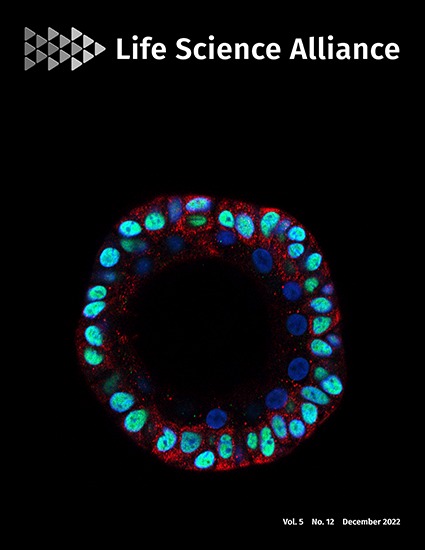
# Researchers Uncover Functional Significance of Previously Overlooked RNA Segments
For many years, specific short RNA sequences, referred to as introns, were regarded by scientists as insignificant byproducts of genetic mechanisms—something that needed to be excised, yet offered no notable function. Nevertheless, groundbreaking research conducted at The Ohio State University has demonstrated that some of these RNA pieces actually play a vital role in the regulation of genes, especially during cellular stress responses.
## Introns: From ‘Waste’ to Active Molecules
The findings, published in *Molecular Cell* on February 11, 2025, examine introns located in transfer RNAs (tRNAs). tRNAs are crucial for the synthesis of amino acid chains into proteins by aligning specific sequences with messenger RNAs (mRNAs). Historically, introns within tRNAs were presumed to be superfluous, as they are eliminated prior to the functional maturation of tRNA molecules.
However, Professor Anita Hopper and her research team uncovered that some of these liberated introns—now called “fitRNAs” (free introns of tRNAs)—actually engage with mRNAs in an unexpected fashion. Once separated from tRNA molecules, these introns selectively attach to complementary mRNA sequences, instigating mRNA degradation and hindering the synthesis of certain proteins.
This revelation contests the entrenched belief that tRNA introns represent evolutionary remnants devoid of purpose. Conversely, they seem to actively participate in the cellular regulatory system, particularly in orchestrating gene expression during stressful situations.
## The Impact of fitRNAs on Protein Production
Utilizing yeast as a model organism, the research team identified 10 different families of tRNA introns, each degraded through unique processes. Their experiments concentrated on two of these families, finding that fitRNAs bind to particular mRNAs, initiating their degradation and effectively halting the synthesis of associated proteins.
Significantly, a direct correlation was observed between the levels of fitRNAs and the abundance of target mRNAs. The absence of fitRNAs in cells resulted in increased levels of the corresponding mRNAs, which in turn heightened protein production. Conversely, overexpression of fitRNAs led to diminished mRNA levels and suppressed protein synthesis.
Co-author Paolo Sinopoli, a third-year student specializing in molecular genetics, identified that at least 33 distinct mRNAs—many associated with cell division and reproduction—are influenced by a specific family of fitRNAs. The capacity to modulate these critical cellular activities implies that introns are not mere detritus but serve an essential function in cellular survival and adaptation.
## A Comparison to microRNAs—But with a Twist
The role of fitRNAs closely resembles that of microRNAs, another category of small RNA molecules previously considered unimportant, which was later discovered to regulate gene expression by binding to and degrading target mRNAs.
Nevertheless, a significant difference exists: microRNAs depend on Argonaute proteins for the regulation of mRNAs, while the yeast species employed in this study lacks Argonaute proteins yet still achieves effective mRNA degradation in response to fitRNA activity.
Moreover, microRNAs focus on specific *non-coding* areas of mRNA, while fitRNAs attach directly to protein-coding regions. This differentiation implies that fitRNAs might govern genes in a unique and previously unrecognized fashion, further complicating our comprehension of RNA-mediated gene regulation.
## Consequences for Cellular Stress Responses
One particularly noteworthy discovery from the study is that some fitRNAs maintain stability under oxidative stress rather than degrading as previously thought. This indicates that cells might utilize fitRNAs as regulatory agents to modulate gene expression during challenging conditions like starvation or heat stress.
“We observe that fitRNAs exist in humans, mice, flies, and yeast,” remarked Sinopoli. “Even though they seem inefficient, they endure across various organisms—hinting at an adaptive benefit.”
The research group intends to investigate further if fitRNAs assist cells in navigating various stressors, suggesting that these small RNA fragments could represent a neglected component of evolutionary survival strategies.
## A Change in Perception Regarding ‘Junk’ RNA
“This research raises new inquiries regarding the broader function of introns,” Hopper stated. “For decades, scientists have dismissed them as genetic waste, but our discoveries imply that they might act as essential regulatory mechanisms under certain circumstances.”
The realization that introns can affect protein synthesis and stress response indicates a major transformation within molecular biology. Rather than being useless remnants of evolutionary history, fitRNAs could exemplify how cells adeptly utilize their genetic resources to adapt and thrive.
The study received support from the **National Institutes of Health**, **Pelotonia undergraduate fellowships**, and **Ohio State undergraduate research scholarships**. Other contributors to this research include Regina Nostramo, Alicia Bao, Sara Metcalf, and Lauren Peltier.
By continuing to explore the role of fitRNAs in various stress conditions, scientists aim to reveal further insights into how these often-overlooked RNA fragments may affect cellular regulation and resistance to diseases. The